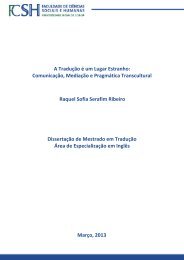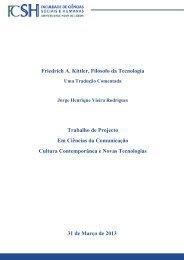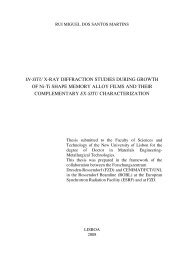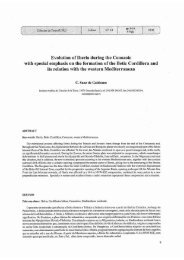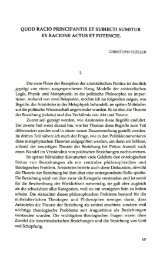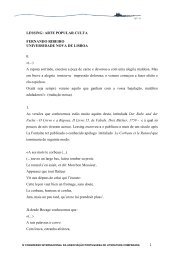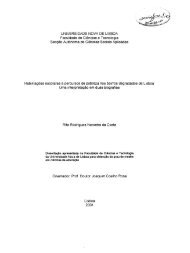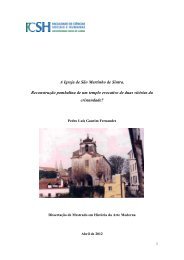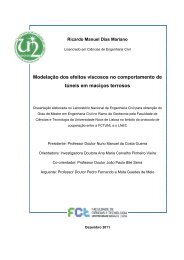Elias Manuel Morgado Pinheiro Dissertação de Mestrado em ...
Elias Manuel Morgado Pinheiro Dissertação de Mestrado em ...
Elias Manuel Morgado Pinheiro Dissertação de Mestrado em ...
You also want an ePaper? Increase the reach of your titles
YUMPU automatically turns print PDFs into web optimized ePapers that Google loves.
However, it was after c.3800BC that the spread of domestication became truly<br />
apparent. Large-scale domestication and horse-centred economy can be found in Botai<br />
culture sites northern Kazakhstan, c.3700BC 68 . After c.3500BC, horse r<strong>em</strong>ains begin to<br />
surface outsi<strong>de</strong> the steppe, in the Upper Danube Valley, Central and Western Europe,<br />
North Caucasus, Transcaucasia and Western Anatolia, thus providing unequivocal<br />
evi<strong>de</strong>nce for its domestication 69 . This raises a question: if horses were first domesticated<br />
c.4800BC, why only after 3800BC did the practice spread? Horses are strong and<br />
t<strong>em</strong>peramental creatures, which makes th<strong>em</strong> unlikely candidates for domestication. That<br />
is the most likely reason why it was domesticated long after cattle or sheep. That is also<br />
why, after it had been domesticated, the practice took so long to become wi<strong>de</strong>spread.<br />
However, unlike other domestic species, horses are extr<strong>em</strong>ely well-adapted to cold<br />
climates. Unlike sheep or cattle, horses are able break ice in or<strong>de</strong>r to drink, and to pierce<br />
ice-crusted snow with their hooves, in or<strong>de</strong>r to reach the winter forage beneath it. That<br />
meant that horses were much easier to feed during winter times. That might have been<br />
the initial reason for domesticating horses: access to an optimum source of food during<br />
winter time. This might have been the reason behind the increase of horse domestication<br />
after c.3800 BC.<br />
Between 4200 and 4100BC, climate began to change, leading to lower annual<br />
t<strong>em</strong>peratures and severe winters, especially between 3960 and 3821 BC. This has led to<br />
the adoption by agricultural societies in the Danube region of more cold-tolerant vegetal<br />
species 70 . Consi<strong>de</strong>ring that the climate change affected the entire northern h<strong>em</strong>isphere,<br />
there is no reason to assume that similar practices were not adopted outsi<strong>de</strong> the Danube<br />
area. To the pastoralist steppe societies, that meant a shift to a more cold-tolerant animal<br />
species, namely, the horse. That can easily explain the rapid expansion of horse<br />
domestication after c.3800 BC.<br />
The adoption of the horse as a meat source by an increasing number of<br />
populations, leads to significant breakthroughs in domestication, culminating in a fully<br />
horse-centred economy in the steppes of northern Kazakhstan, after c.3800 BC. The<br />
Botai sites revealed the ol<strong>de</strong>st known evi<strong>de</strong>nce of large-scale horse domestication.<br />
Represented by four settl<strong>em</strong>ents, Botai, Krasnyi Yar, Vasilkovka and Roshchinskoe,<br />
68 Olsen, 2008, p.257<br />
69 Anthony and Brown, 2007<br />
70 Bailey, 2002<br />
42



